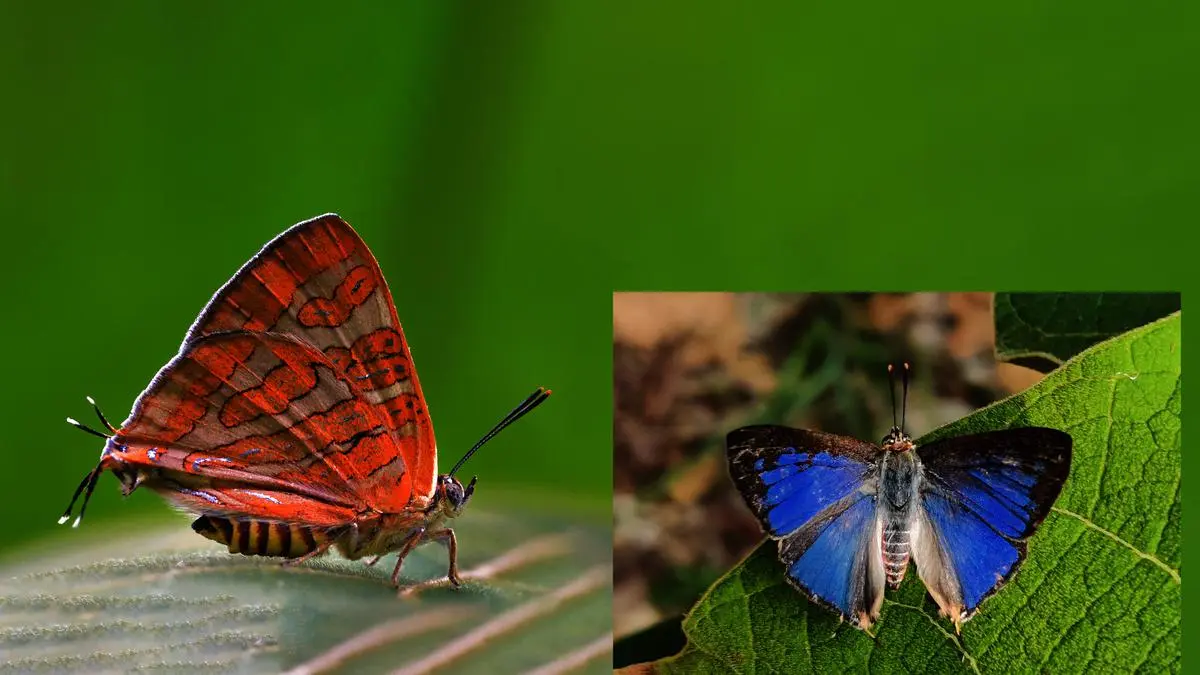About Cigaritis meghamalaiensis
- It is the new species of butterfly.
- It has become the first butterfly species to be described from the Western Ghats in 33 years.
- The researchers had first come across the distinct species belonging to the Cigaritis genus in the high elevations of Periyar in Idukki in 2018.
- Further explorations have revealed the species to be confined to the Meghamalais and the adjoining Periyar Tiger Reserve.
- Appearance
- The discal and post-discal bands on the forewing underside of the adult butterfly are conjoined and lie parallel from their origin at the costa.
- The unique feature distinguishes the new species from all other Cigaritis occurring in Peninsular India and Sri Lanka
- There are seven species of Cigaritisin the Western Ghats, viz., C. vulcanus, C. schistacea, C. ictis, C. elima elima, C. lohita lazularia, C. lilacinus, and C. abnormis. Of these, all except C. lilacinus have been reported from the southern Western Ghats.
Key facts about Periyar Tiger Reserve
- It is located in the Western Ghats of Kerala.
- It gets its name from the River Periyar, which has its origin deep inside the reserve.
- Two main rivers, Pamba and Periyar, drain the reserve.
- It is home to many tribal communities, including the Mannans and the Palians.
- Vegetation: It consists of tropical evergreen, semi-evergreen and moist deciduous.
- Flora: Teak, mangoes, rosewood, jamun, jacarandas, terminalias, tamarind, royal ponciana, bamboos etc.
- Fauna: Includes Elephants, Wild Pigs, Sambar, Gaur, Mouse Deer, Dole or Barking Deer, Indian Wild Dog and Tiger etc.
Q1) What is Pollination?
It is the delivery of pollen to the female organs of a plant (stigma in flowers). Pollen is made by the male organs of a plant (stamens in flowers) and contains genetic information needed for plant reproduction. Pollen may be transferred to female organs on the same plant (self-pollination) or another plant of the same species (cross-pollination). As a result of pollination the plants produce seeds.
Last updated on June, 2025
→ UPSC Notification 2025 was released on 22nd January 2025.
→ UPSC Prelims Result 2025 is out now for the CSE held on 25 May 2025.
→ UPSC Prelims Question Paper 2025 and Unofficial Prelims Answer Key 2025 are available now.
→ UPSC Calendar 2026 is released on 15th May, 2025.
→ The UPSC Vacancy 2025 were released 1129, out of which 979 were for UPSC CSE and remaining 150 are for UPSC IFoS.
→ UPSC Mains 2025 will be conducted on 22nd August 2025.
→ UPSC Prelims 2026 will be conducted on 24th May, 2026 & UPSC Mains 2026 will be conducted on 21st August 2026.
→ The UPSC Selection Process is of 3 stages-Prelims, Mains and Interview.
→ UPSC Result 2024 is released with latest UPSC Marksheet 2024. Check Now!
→ UPSC Toppers List 2024 is released now. Shakti Dubey is UPSC AIR 1 2024 Topper.
→ Also check Best IAS Coaching in Delhi






















